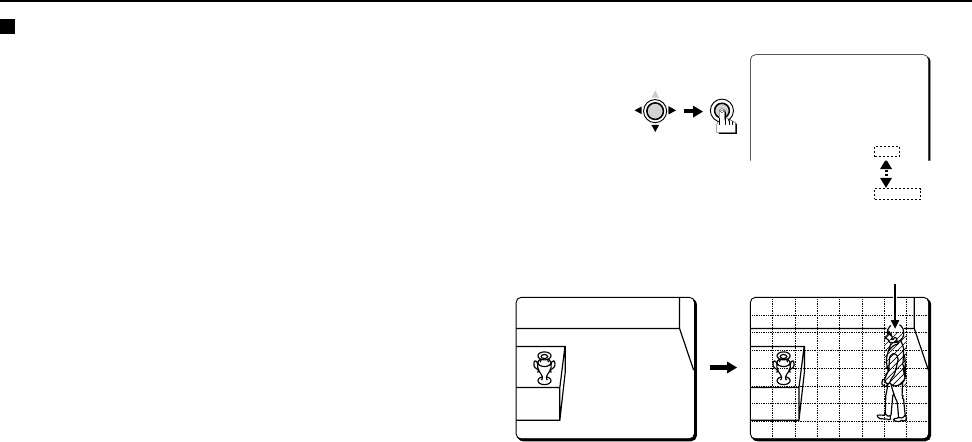
USING THE MENU SCREEN MOTION
MOTION setting
For the MOTION setting, the screen area is split up into 64 (8 X 8)
detection areas where movements (or changes) are detected.
Then, using the SENSITIVITY and other menu settings, these
movements can be set to trigger alarms. With these menu settings,
you can set the MOTION setting to detect only the motions you
require for your situation.
Though, the initial settings will provide adequate detection of
movement, alarms may be triggered by motions that are normal and
should be ignored. To customize the MOTION setting for your
situation, use the MASKING, SENSITIVITY, and other menu settings.
For more details regarding the MOTION operation, refer to the
examples given on page 46.
Note: MOTION settings are not possible if either of the following
settings have been made:
☞ The IRIS (SENSE UP) mode has been set. (Refer to page 27.)
☞ The SHUTTER (LONG) mode has been set. (Refer to page 35.)
Note:
• When the MOTION default setting is OFF, movements will not be
detected and alarms triggers will not be output.
• When doing the MOTION settings, the dotted lines and the mask
shown on the illustrations are for clarity only, they do not actually
appear on-screen.
• An alarm is output when all the parameters set for ADJUSTMENT
FOR MOTION items are met.
(Example)
The detection is done
according to the
movement and changes
sensed in these areas.
No movement sensed on-
screen.
A moving subject is
detected.
ON p
MAIN MENU
LANGUAGE SET p
CAMERA ID OFF
SYNC INT
IRIS AI p
WHITE BALANCE ATW p
SHUTTER OFF
MOTION OFF
CURSOR
SET
L53R4/US GB 1999, 12, 7
36 English


















